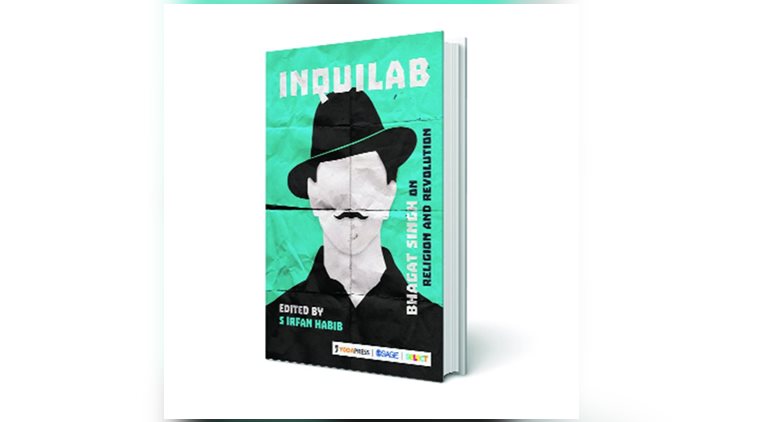
Inquilab: Bhagat Singh on Religion & Revolution
Edited by S Irfan Habib
SAGE Publications Pvt. Ltd
220 pages
Rs 295
There is something remarkably calm and unflappable about Che Guevara’s expression in his classic portrait, clicked by Alberto Korda. Che was 31, and that iconic photograph established Che as an exceptional symbol — and a certified marketing tool, great as an image on tee-shirts and even vodka. This popularity has been useful for the cause he espoused, but it also divested Che of what he essentially stood for. And what he died for, too. This successful rendering of him as a two-dimensional hologram took away all substance, and gutted what he may have wanted to be remembered for.
A similar process has been in progress with Bhagat Singh, turning him into a very powerful symbol of what you will. After Mahatma Gandhi, Jawaharlal Nehru and Subhash Chandra Bose, the one sketch you are likely to recognise nearly a century on, is that of Bhagat Singh.
What S Irfan Habib’s Inquilab: Bhagat Singh on Religion and Revolution does is to rescue Singh from passive shaheedi, or martyrdom. A man who possessed the ability and fortitude to wrestle with ideas, even as he engaged in action against the Empire — bombing the legislative assembly, for instance — Singh found time to articulate and present what others have been unable to in decades.
Bringing together his early writings, commentary and thoughts; classifying and ordering them, providing the context of his times; and adding flesh and substance to the hologram that Singh was rapidly being turned into, is Habib’s finest contribution, though other historians have worked in this area. Singh had spent two years in jail, and his prison diary is an eloquent and wide-ranging set of writings on revolution, equality, Marxism, atheism and, often, just poetry — this was first revealed by an Indian historian, G Deol, in 1968, in the magazine People’s Path. After that, many historians spoke about what he actually stood for, and helped to appreciate the ideas and thoughts of the legend.
A few things stand out in this book. Singh’s commitment to a social revolution in India was almost as strong as his desire for political revolution. He derided a certain set of Indian leaders yearning to go back to a “golden age” and instead, argued for a scientific and rational look ahead. In his essay in the journal Kirti, in July 1928, he essayed a comparative study of Bose and Nehru, and called for “food for thought” to be drawn from Pandit Nehru, and not Bose. He specially urged the Punjabi youth to follow the radical Nehru for inquilab to become achievable in the near future.
Singh’s commitment to social reform and his campaign against untouchability are generally not discussed even by
people familiar with his work. But it was central to his ideas about the goals India needed to set for itself as it struggled to shake off the imperial yoke and modernise.
At a political conference of the Naujawan Bharat Sabha in Amritsar in 1928, there was a huge debate between Singh and his comrades on the role of religion in politics. Singh wrote that the trappings of the Vedas and the Koran alike were to be rejected if one was to cast off mental slavery. To free the mind, he was convinced, there was no room for religion in politics: “the meaning of freedom is not only to liberate ourselves from the clutches of the English, but also complete independence, when all people live together harmoniously, liberated from mental slavery.” That he sent a telegram to Lenin to congratulate the revolutionaries, that he wrote and published about universal brotherhood at the age of 17, and that he walked away from violent imaginaries to the whetting stone of innovative ideas, are all brought into focus as Habib traces how his though progressed and evolved through those difficult years.
Eminently readable, this book is useful in today’s times as a quick guide to history. But it is also very inspirational as the personality of Singh — his scientific, socialist approach and his “alternative framework for governance” — comes alive. In times when the yearning for the return to a mythical golden age has increased, and political, economic and social exclusion are shamelessly preached, it is sobering to see that 90 years ago, a young man had argued for exactly the opposite. Inquilab Zindabad, as Bhagat Singh would have said.